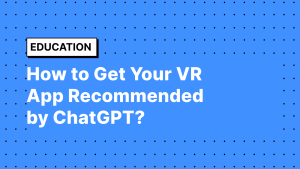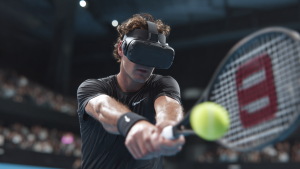What Are the Benefits of Using VR in the Classroom?
Education | May 18, 2017
With virtual reality (VR) playing an increasing role in reshaping industries such as real estate and medicine, educators have begun to explore using VR in academic settings.
Schools and Teachers can sign up here to use Unimersiv in the classroom.
Sign up
As it is more actively adopted, VR will increasing be found in educational spaces and many people already believe that VR is the future of education. In fact, about one-third of the tech-orientated attendees surveyed at the Consumer Electronics Show 2016 think that education is the area that is most likely to benefit from VR with virtual classrooms and VR-enabled textbooks.
As VR expands its reach into the educational sector, we must explore the tangible impacts that this technology will have on both students and educators in our classrooms. Here we demonstrate some of the definitive benefits of using VR in the classroom backed by research.
Stopping Classroom Smartphone Distractions
A study published in the Journal of Media Education reported that students spent a fifth of their time in class performing activities on their devices that have nothing to do with their school work. In fact, the study found that students check their digital devices an average of 11.43 times during class. Putting those smartphones with VR technology could potentially eliminate this problem. Instead of spending idle time on their phones, students would instead be required to use them to engage with VR software for the lesson of the day.
Bridging the Attention Gap
Edger Dale’s Cone of Experience has shown that the average person only remembers 20% of what they hear and 30% of what they see, but up to 90% of what they personally experience. As a result, VR educational materials provide the scenario needed to build the attention gap, helping students to become more attentive during lessons. A meta-analysis done in 2014 found that students actually do learn better when immersed in virtual worlds.
Eliminating Language Barriers
In today’s multicultural societies, bringing students together from all different backgrounds is still a challenge due to language differences. For students that wish to study in another country, traditional methods of teaching have always required that they achieve sufficient fluency in order to effectively learn in a classroom where lessons are taught in another language. With VR, language translation can be implemented within the software, eliminating language as a significant barrier to a student’s educational goals.
Rewarding Students for Their Achievements
Much of the traditional approach to education has made success neutral while punishing students for failures. With VR software, content producers can bring the gamification aspects of technology that have enhanced other consumer products to educational materials.
Research has already shown that immediate rewards can boost student performance. In fact, delaying rewards actually eliminates all motivating power of the incentive. Implementing rewards systems into VR educational software could potentially deliver significant results with regard to student achievements in previously low-performing academic environments.
Social Integration of Students
Helping students to connect with their peers is essential for creating a positive learning environment for students. VR technology can foster social integration of learners within a classroom environment by bringing together students who have different learning styles and needs. This finding is according to Dr. Conor Galvin at the University College Dublin School of Education and Lifelong Learning who evaluated the MissionV Schools Pilot Programme, which involved 20 primary schools.
According to Dr. Galvin, students who struggled to become part of the class group were able to become accepted by their peers because of their technology skills and students lacking in confidence were able to come out of their shells.
“Additional evidence which wasn’t published to the site, pointed to especially positive outcomes for individual children from ethnic minorities, or with learning difficulties, or experiencing problems at home,” said MissionV’s Corbett. “In fact, we heard some particularly heartwarming stories in that regard.”
The programme was also used successfully with gifted children and produced impressive results according to the teachers in the pilot schools. It also created unique opportunities for students to peer teach, helping them to deepen their own understanding and improve their self-confidence.
Integrating VR Into the Classroom
VR is here to stay—but as with any new educational tool, we’ll need to develop best practices for its use in the classroom. Now is a great time to become part of the experiment by bring VR to your own school. Sign up with Unimersiv today and become part of the future of education.
Subscribe to our newsletter
We write about the use of Virtual Reality for non-gaming applications.










